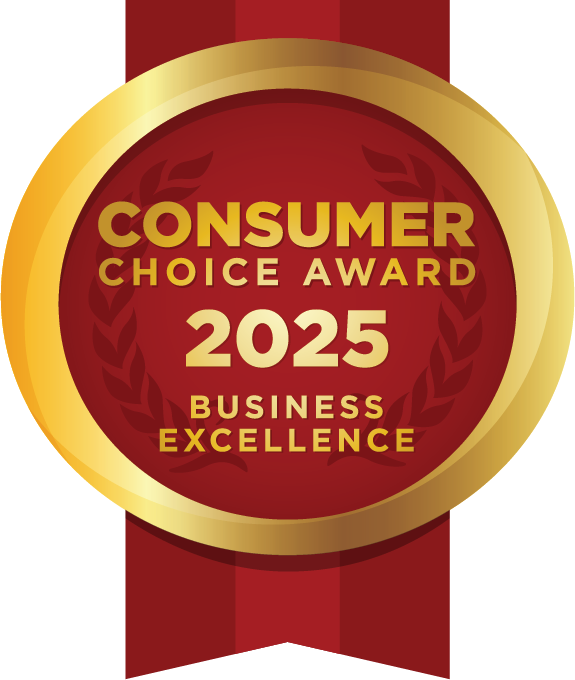
The Differences between Bankruptcy and the Orderly Payment of Debts Program
Dealing with debt can feel a bit like you’re climbing a mountain that keeps getting steeper. It’s tough. But when you’re in Alberta, you have a few main options to help you get back on track: bankruptcy, a consumer proposal or the Orderly Payment of Debts (OPD) program. We’ve written about consumer proposals in other posts, so in this blog post, we will focus on the differences between bankruptcy and the OPD program. We’re here to help you understand these options so you can decide what’s best for you without feeling overwhelmed.
Think of the OPD program as a helping hand that brings all your debts together into one easier payment every month at a fixed interest rate of 5%. It’s like having a solid plan that keeps you on the right path without the stress of juggling multiple bills. On the flip side, bankruptcy is like hitting the reset button. If you qualify, it can clear away a significant amount of your debt, but it’s a big step with lasting effects. Not only can it change your credit score, but you could also lose some of what you own.
We get it—money troubles are stressful. But taking the first step towards understanding your options is a big deal. By being here and reading this blog post, you’re doing something great for yourself. We’re here to support you every step of the way to move towards a brighter, more secure financial future.
Let’s begin!
In this article, we’re going to cover:
What Happens to Your Debt
Administration of the Debt Program
Effects on Assets and Property
Duration of Debt Management Option
Dealing With Creditors
Fees
Student Loans
Effects on Credit
Bankruptcy vs. OPD: Summary
What Happens to Your Debt
Understanding what happens to your debt under different relief options will help you decide the best path.
The Orderly Payment of Debts (OPD) program focuses on repaying your debt fully. It’s not about wiping the slate clean but about responsibly paying back what you owe. With OPD, you commit to a structured repayment plan. The payments are set at an amount that fits within your budget, making it possible for you to meet your obligations. You’ll feel great knowing you’ve taken charge of your debts and paid them off on fair terms. Plus, you’ll have new budgeting skills that will keep you out of debt in the future.
On the other hand, when it comes to bankruptcy, there is a common misconception that your debts are just forgiven, no questions asked. However, choosing bankruptcy doesn’t mean all your debts are automatically wiped clean; it’s a bit more complicated. While bankruptcy can offer a way to get rid of some debts, it only works if you meet certain rules and conditions set by the bankruptcy authorities. So, you might not be free from all your debts. Bankruptcy is a big decision that can affect your credit score and how you handle money for many years. It could be the right move for some people, giving them a fresh start from a lot of debt, but it comes with big downsides.
Administration of the Debt Program
The administrative processes for handling debt through these options are quite different.
The OPD program is administered only by Money Mentors in Alberta, a not-for-profit organization. Money Mentors credit counsellors guide you through the OPD process, making sure that your repayment plan is manageable. They also provide financial education to help prevent future money problems. The one-to-one support from Money Mentors makes the OPD program more than just debt consolidation. You’ll also learn lots to help you better manage your money in the future.
Bankruptcy is administered by a Licensed Insolvency Trustee (LIT). An LIT is a professional authorized by the federal government to manage the bankruptcy process. This trustee works with you to ensure that your bankruptcy is processed according to the law. They also help distribute any available assets, and excess income, to your creditors.
Effects on Assets and Property
When it comes to bankruptcy and the OPD program, you need to disclose certain things. This means that you must give the credit counsellor or LIT information about your finances, assets, and property.
The OPD program only requires that you disclose your secured and unsecured debts. Unlike bankruptcy, you keep ownership of your possessions on the OPD program. There is no need to disclose or risk losing your assets. It’s a softer, less invasive approach that respects your personal and financial autonomy.
Bankruptcy requires you to disclose all your assets to the LIT. They will then determine what you can keep and what you must sell to pay your debts. This process can be different depending on your circumstances and the types of assets you own. Some assets are exempt and can be kept, but this varies by province. Exempt property are assets that the law allows you to keep even in bankruptcy, making sure you’re not left with nothing. Find out more about Alberta Bankruptcy Exemptions.
Duration of Debt Management Option
Both the OPD program and bankruptcy have different durations.
The OPD program was originally legislated for 3 years, although it can now allow for a repayment period of up to 5 years. This longer timeframe makes repayment more manageable and less stressful, and is comparable to the duration of a bank consolidation loan. This gives most people enough time to adjust their budget and lifestyle accordingly.
Bankruptcy durations can vary, typically lasting between 9 to 36 months. The timeframe depends on your income, assets, and whether it’s your first bankruptcy filing. The path through bankruptcy is short compared to other debt-relief options. However, it may negatively impact your future goals, such as buying a house.
Dealing With Creditors
Both the OPD program and bankruptcy offer legal protection from creditors. Once you file for bankruptcy or enter the OPD program, creditors are not allowed to contact you for payment. This legal protection eliminates the constant worry of creditor harassment. Your mental health may improve when you no longer have the stress of collection calls.
Fees
The OPD program charges a fee of around 10% of your monthly payment, up to a maximum of $50. Most of your payment goes directly towards reducing your debt. This cost structure makes the OPD program an affordable option for many Albertans.
Filing for bankruptcy involves a minimum fee of $1,800, which covers the administration costs, the trustee’s fees, and other expenses. These fees may be higher depending on the complexity of your bankruptcy and your overall debt load.
Student Loans
The OPD program is unique in that it allows you to include student loans in your repayment plan. Student loans can be included in OPD as long as at least 20% of the loan is repaid within the first 5 years. This may make the OPD program a more attractive option for those with significant student loan debt.
Student loans are a bit more tricky with bankruptcy. If you’ve attended school within the last seven years, your student loans may not be dealt with through bankruptcy.. Instead, you would still have to pay off your student loans after you complete your bankruptcy.
Effects on Credit
Another big difference between these options is the impact on your credit.
The OPD program is reported as a 7—indicating that you are making regular payments through a special arrangement to settle your debts. It is on your credit history for the length of the program and for two years following its completion. While still a mark on your credit history, it’s viewed more favourably than a bankruptcy notation.
A first-time bankruptcy is reported as a 9 for 6 years after discharge, indicating debt not paid, written off, or in collections. This can significantly hinder one’s ability to get credit in the future.
Bankruptcy vs. OPD: Summary
| Orderly Payment of Debts (OPD) | Bankruptcy | |
|---|---|---|
| What Happens to Your Debt | Debt is fully repaid through a structured plan (with creditors getting 5% interest). Supports sustainable financial recovery. Fosters a sense of accomplishment. | If you qualify, a significant amount of debt is forgiven. Significant impact on credit. |
| Administration | Only administered by Money Mentors in Alberta. Includes financial education and support. | Managed by a Licensed Insolvency Trustee (LIT). LIT distributes assets, and excess income, to creditors. |
| Effects on Assets and Property | Only unsecured debts are part of the program. No risk of losing assets. | Full disclosure of assets is required. Some assets may be sold to pay debts. Certain assets may be exempt. |
| Duration | Repayment period of 3 to 5 years. | Lasts 9 to 36 months, depending on circumstances. |
| Dealing With Creditors | Provides legal protection from creditors. | Provides legal protection from creditors. |
| Fees | Fee is 10% of monthly payment, up to a maximum of $50 (creditors get 5% interest) | Minimum fee of $1,800 covering various costs. |
| Student Loans | Can be included in repayment plan if at least 20% is repaid within the first 5 years. | Not included if attended school within last 7 years. Must pay off student loans separately. |
| Effects on Credit | Reported as a 7 for the length of the program and for 2 years following its completion. | Reported as a 9 for 6 years after discharge. |
Choosing between bankruptcy and the Orderly Payment of Debts program is a big decision. The decision impacts your current financial situation and future financial health. Both options have advantages and disadvantages, and the right choice depends on your circumstances, goals, and values.
We encourage you to seek unbiased professional advice to explore these options further. Remember, while bankruptcy might seem like a quick fix, avoiding bankruptcy through a program like OPD can lead to a more stable and less stressful financial future.
For more detailed guidance and support, don’t hesitate to reach out to our AFCC non-profit credit counsellors. Your journey to financial recovery is unique, and with the right help, you can find the best solution for you. Call Money Mentors today!
Have questions?
Need more information or want to talk to an accredited financial counsellor for peace of mind? Let us help.
Call 1-888-294-0076 or book an appointment. It’s free for all Albertans.








